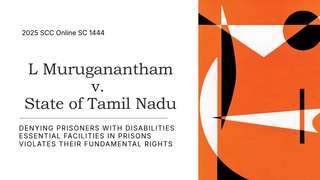Case Summary of Gajanan Moreshwar Parelkar v. Moreshwar Madan Mantri
This case[1] deals with s. 124 and 125 of Indian Contract Act, 1872, concerning indemnity. The Plaintiff, Gajanan Moreshwar got a plot of land on lease from BMC, Mumbai and then allowed the defendant to erect a building on the acquired land. The defendant contracted a supplier for materials, but defendant defaulted on the payment of Rs. 5000.
The plaintiff was asked to mortgage the land to Keshavdas Mohandas (supplier) for one year, by the defendant. This happened once more and the property was mortgaged again to Keshavdas for Rs. 5000. The defendant defaulted on the payment. There was a contract between plaintiff and defendant, during second mortgage, for indemnifying the plaintiff against all claims and paying off the mortgages against the land. The defendant refused to pay the amount and so the Plaintiff sued the defendant to recover the amount.
Under this case, some issues were raised such as the need for an actual loss; whether the suit is premature; and if the plaint required to disclose any cause of action. The Court observed that s. 124 and 125 does not contain entire rules of indemnity and thus is insufficient. If the indemnity holder has suffered a liability that is absolute, he has right to ask the indemnifier to save him from liability and pay it off. The court held in favour of the plaintiff and he was entitled to be indemnified by the defendant against all liability under the mortgage and deed of charge.
This case has significance because contract of indemnity was wherein a promisor agrees to do good for all the losses and costs incurred or to be incurred by the promise. Section 124 applies when the promise has to bear some losses with regard to specific act while section 125 provides for a legal suit only when promise has actually procured the losses. Though in some cases promise is deemed liable after deadline is crossed but liability can’t be fixed over promisor till incurring of damages. Therefore, causing a case to be premature.
Moreover, the views of Common Law Courts were identical till 1914, when Court of Equity was of opinion, “A Contract of indemnity would serve little purpose if the indemnity holder was made liable within the first instance.” This later came to be equitable principles applied universally.
1. Gajanan Moreshwar Parelkar v. Moreshwar Madan Mantri, AIR 1942 Bom 302.


Comments